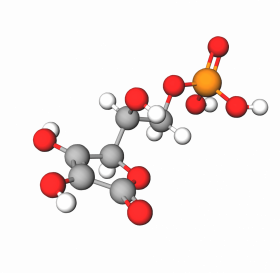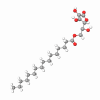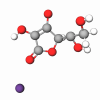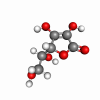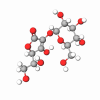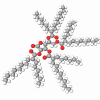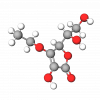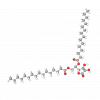Sodium Ascorbyl Phosphate (SAP or Trisodium ascorbyl phosphate) is the sodium salt of the ascorbic acid's monophosphate ester, a stable form of vitamin C for skin care formulations. There has also been an interest in cosmetics containing vitamin C for many years since consumers know the beneficial effects when ingested as citrus fruits or vitamin supplements. However, the many talents of vitamin C (ascorbic acid) in skincare have been underused because of its instability against oxidation and the resulting browning of products in which it was used. Thus, cosmetic manufacturers could not make full use of its beneficial effects as an antioxidant, a collagen booster, or a skin lightener.
Stabilization has therefore been an essential issue for many years. One elegant way to overcome the stability problem is by temporarily blocking the active center of the ascorbic acid molecule. So, this is the principle of stable Trisodium ascorbyl phosphate that enhances the performance of cosmetic products is no longer a dream.
Sodium ascorbyl phosphate is a white powder, easily soluble in water to concentrations up to 50%. As distinct from ascorbic acid, it is exceptionally stable in aqueous solutions. SAP is a provitamin, so to become biologically active L-ascorbic acid, the vitamin must first be freed by phosphatase enzymes that are ordinarily constituent in the skin.
In skincare formulas, Trisodium ascorbyl phosphate is an antioxidant that works to eliminate free radicals. In addition, this particular Vitamin C derivative can stimulate collagen repair, thus diminishing some of the effects of photoaging. Sodium Ascorbyl Phosphate is also capable of replenishing Vitamin E's antioxidant capacity.Ingredients
What are the benefits of Sodium Ascorbyl Phosphate?
The high interest in vitamin C and its derivatives for use in cosmetic products is based on the many benefits they are known for. Furthermore, the topical application of Sodium Ascorbyl Phosphate in skincare products allows vitamin C levels to be reached in the skin, which would not be possible by consuming it in food or as an oral supplement.
Prevention of oxidative damage
SAP alleviates oxidative stress to the skin. Lipid peroxidation induced by UV-A light entails the formation of peroxide radicals along the side chains of polyunsaturated fatty acids in lipids. A single initiating event can lead to many cycles of peroxidation, leading to breakdown products that themselves damage DNA or protein. The irritating effect of lipoperoxides in connection with acne and dandruff is also under discussion.
A study conducted on 20 healthy volunteers shows that applying a cream containing Sodium Ascorbyl Phosphate prevents the formation of UV-A-induced squalene hydroperoxide. This inhibition was even more pronounced when it was combined with tocopheryl acetate.
Stimulating collagen synthesis
Dermatologists have long observed that skin fibroblasts synthesize less collagen as they age. Vitamin C can counteract this decline in two ways. First, it is an essential cofactor in the hydroxylation of lysine and proline, which contribute to the stability of collagen. It also stimulates collagen synthesis, thus reaching a significant target of skincare cosmetics: the delay of chronic aging.Skin lightening
Ascorbic acid and its esters are also used in skincare products as active ingredients to lighten the skin and prevent and attenuate age spots. In addition, several in vivo studies have demonstrated the suppression of pigmentation and in vitro studies showing how the vitamin acts at the level of melanogenesis.
Replenishing vitamin E
Ascorbic acid is the primary water-soluble non-enzymatic antioxidant. As an ideal free-radical scavenger, it also plays an essential role in the regeneration of vitamin E from the vitamin E radical. This recycling effect of ascorbic acid on oxidized vitamin E has been shown explicitly in the skin. Moreover, when used in combination, vitamin C as the water-soluble and vitamin E as the oil-soluble vitamin form a compelling antioxidant couple. The key is never to use one single antioxidant alone.
